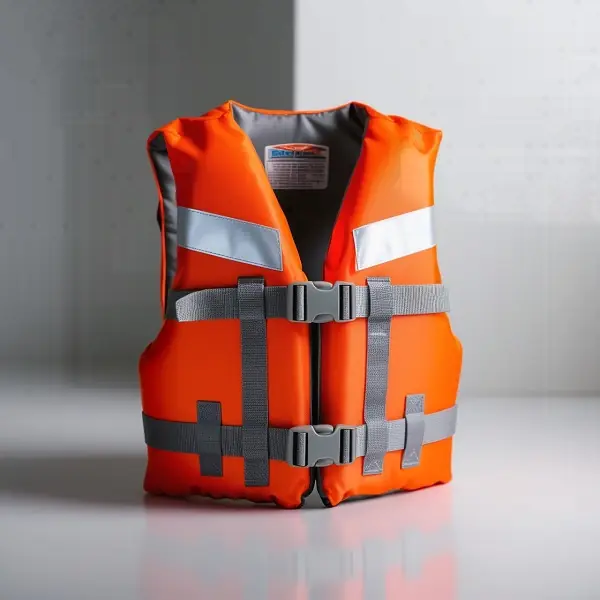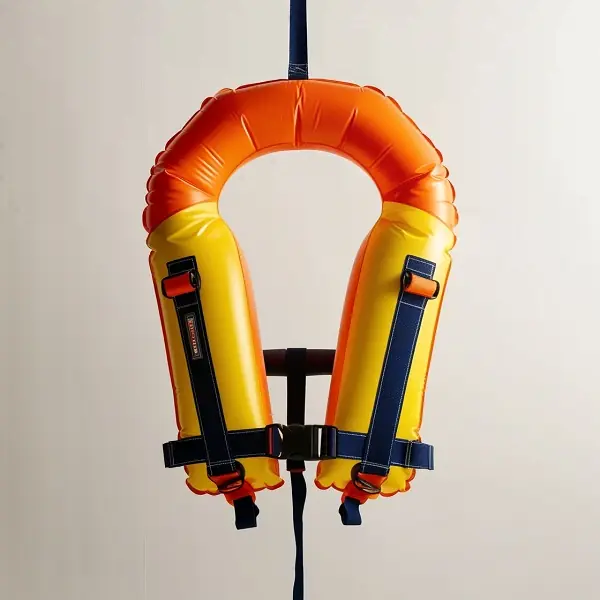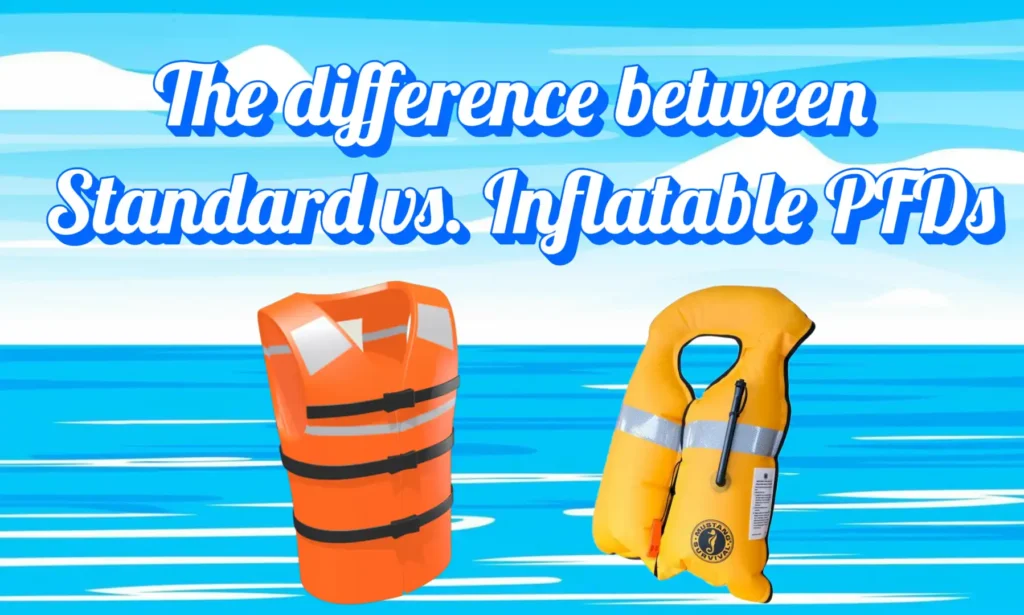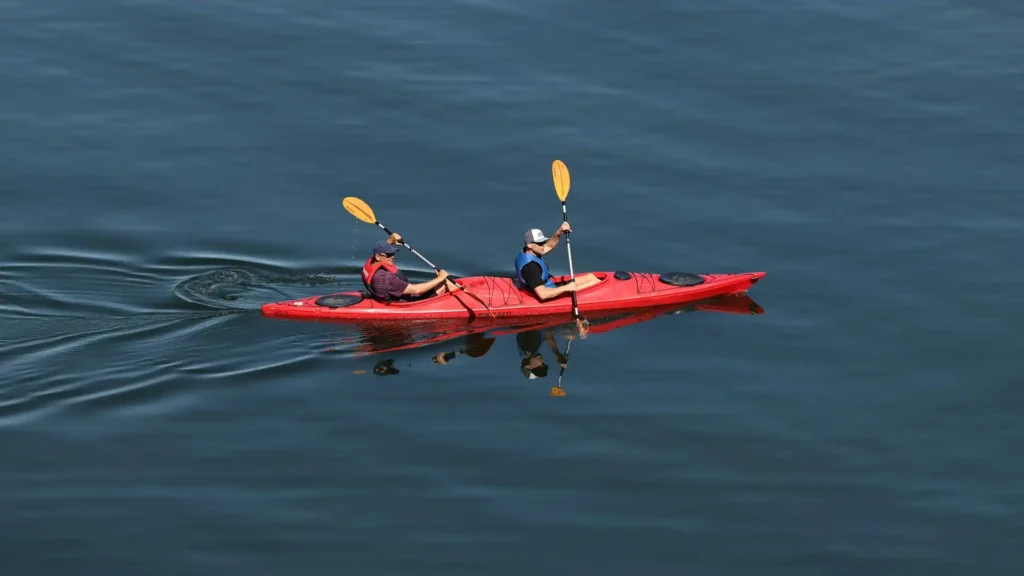It is important to choosing the right PFDs – Personal Flotation Device – to be safe on water. A PFD is your lifeline in case of emergencies when kayaking, boating, fishing, or enjoying other water activities. Among the many options available, two of the most popular types are standard PFDs and inflatable PFDs.
There are many differences between standard vs. inflatable PFDs. Each type has its own strengths, and weaknesses, and the best choice depends on your specific needs, activity, and environment.
In this guide, we’ll dive into the key differences between these two types of life jackets, exploring factors such as flotation mechanisms, comfort, maintenance, reliability, and more. By understanding these distinctions, you’ll be better equipped to choose the PFD that ensures both your safety and comfort on the water.
Flotation Mechanism of Standard and Inflatable PFDs
Standard PFDs
The foam provides inherent buoyancy, meaning they are always ready to function in the water.
Offer consistent flotation in any situation, regardless of whether the user is conscious or unconscious.
No mechanical components, so there is no risk of malfunction or failure in critical moments.
Can be relied on in all water environments, from calm lakes to turbulent rapids.
Inflatable PFDs
Can be inflated manually with a pull cord or automatically when submerged.
Offer a sleeker, compact design when deflated. Easier to store and wear.
Rely on CO2 cartridges to inflate. So you must check them periodically to ensure functionality.
Some models have an oral inflation tube as a backup option in case the CO2 mechanism fails or is depleted.


Difference in Comfort
Standard PFDs
Bulkier due to foam padding. Features contoured shapes for improved comfort.
Feel warmer in hot weather, especially if made from thick materials without ventilation panels.
Heavier than inflatable PFDs, but the weight is evenly distributed across the torso.
Often designed with mesh panels or perforated foam to improve airflow and reduce sweat buildup.
Inflatable PFDs
Lightweight and minimalistic. Less noticeable when worn for long periods.
Ideal for activities where comfort and ease of movement are priorities, such as fishing, sailing, or recreational boating.
Adjustable straps allow for a customized fit. More comfortable for different body shapes and sizes than standard PFDs.
Some models can be worn over clothing or harnesses without adding bulk or restricting movement.
Different Maintenance Requirement
Standard PFDs
Require little upkeep beyond rinsing with fresh water after exposure to saltwater and drying properly to avoid mold or mildew.
Foam material is durable and unlikely to degrade with proper care. This gives these PFDs a long lifespan.
Straps and buckles should be checked periodically but are less prone to failure than inflatable mechanisms.
Can be stored almost anywhere. They don’t have mechanical parts that require protection from extreme temperatures or moisture.
Inflatable PFDs
The CO2 cartridge must be inspected regularly to ensure it’s not expired or punctured.
The inflation bladder needs to be checked for leaks or damage after each use. Check them before using next time.
Require proper rearming after each deployment. Replace the CO2 cartridge. It cost you some maintenance.
Must be stored in a cool, dry place to prevent degradation of the inflatable bladder or mechanical components.
Reliability Differences
Standard PFDs
Function immediately upon contact with water, making them reliable for sudden emergencies.
Effective even in cases where the wearer is unconscious. It is safer then inflatable PFDs for non-swimmers or in conditions where the water is rough.
Consistently buoyant, with no dependency on user action or mechanical systems.
There are no moving parts that get clogged or damaged. So, perform well in environments with debris, waves, or turbulence.
Inflatable PFDs
Manual models. Requires the wearer to pull a cord, which isn’t possible in conditions when the user is unconscious or panicked.
Automatic models are designed to inflate upon water immersion but may fail if the sensor is blocked or damaged.
Not suitable for activities where frequent water exposure (like capsizing or splashing) could trigger accidental inflation.
Can malfunction if the CO2 cartridge isn’t properly installed or maintained.
Buoyancy of Standard and Inflatable PFDs
Standard PFDs
Provide a fixed buoyancy level (usually 16–18 pounds), which is adequate for most kayaking and recreational activities.
Ideal for paddling scenarios where the user frequently gets wet, such as whitewater kayaking, as the flotation is unaffected by water exposure.
Provide enough support to keep most users afloat even with additional gear or clothing.
Perform well in shallow water environments where quick flotation is needed.
Inflatable PFDs
Offer higher buoyancy levels (typically 22–34 pounds when inflated), which is advantageous for open water or offshore conditions.
Some models are designed with added buoyancy to keep the wearer’s face above water, especially in rough seas.
Buoyancy is non-existent when deflated. The PFD must be activated to function properly.
Extra buoyancy make inflatable PFDs suitable for larger or heavier individuals, as well as those carrying heavy gear.
Use Cases
Standard PFDs
Designed for a wide range of water activities, including kayaking, canoeing, paddleboarding, and swimming.
Essential for whitewater kayaking or rafting, where consistent flotation and durability are critical.
Ideal for children and non-swimmers due to their always-on flotation.
They remain effective in any situation. Commonly used in environments with frequent water exposure or rough conditions.
Inflatable PFDs
Preferred for calm-water activities like recreational boating, fishing, or sailing, where the likelihood of getting wet is low.
Popular among experienced swimmers who prioritize comfort and mobility over continuous flotation.
Suitable for long trips in hot weather, as their lightweight design reduces heat retention and chafing.
Not recommended for high-impact or water-intensive activities like whitewater kayaking, as accidental inflation can be a nuisance.
Certification Requirement of Standard and Inflatable PFDs
Standard PFDs
Certified as inherently buoyant devices by organizations like the U.S. Coast Guard (USCG), Transport Canada, or CE/ISO in Europe.
Always meet safety standards when properly worn. They are dependable for all activities.
Include a label with specifications and weight recommendations to ensure proper usage.
Inflatable PFDs
Must be worn at all times to meet safety certification requirements e.g., USCG Type V PFDs require wear to count as legal flotation.
Some models don’t meet certain regulations for activities where constant flotation is required e.g., whitewater rafting.
Often feature a combination of certifications for manual and automatic deployment, but these depend on proper maintenance and functioning.
Difference in Cost
Standard PFDs
More affordable upfront, with lower prices.
They are cost effective. No recurring costs beyond basic maintenance.
Durable materials and simple design mean they can last for years with proper care.
Inflatable PFDs
Higher initial cost depending on the model and features.
Recurring costs for CO2 cartridges and rearming kits.
May require professional servicing for damaged components, adding to the long-term expense.
Summary of the Differences
Feature | Standard PFDs | Inflatable PFDs |
Flotation Mechanism | Foam, always buoyant | CO2 cartridge, activated manually or automatically |
Comfort | Bulkier, more restrictive | Lightweight, low-profile |
Maintenance | Minimal | Regular checks and cartridge replacement required |
Reliability | Always reliable | Dependent on activation |
Buoyancy | Fixed (16–18 lbs) | Higher when inflated (22–34 lbs) |
Best For | High-risk activities, water sports | Calm waters, dry conditions |
Cost | Lower upfront, durable | Higher upfront, recurring costs |
Which One Should You Choose?
Choose a standard PFD if:
You are kayaking, canoeing, or engaging in water activities where consistent flotation is necessary.
You need a durable, low-maintenance option that works in all conditions.
You are in rough water or high-risk situations e.g., whitewater kayaking, children, non-swimmers.
Choose an inflatable PFD if:
You’re boating, fishing, or engaging in activities where staying dry is likely.
Comfort and mobility are your top priorities.
You’re in calm, open water and confident in your swimming ability and no life-threatening hazards are coming.




